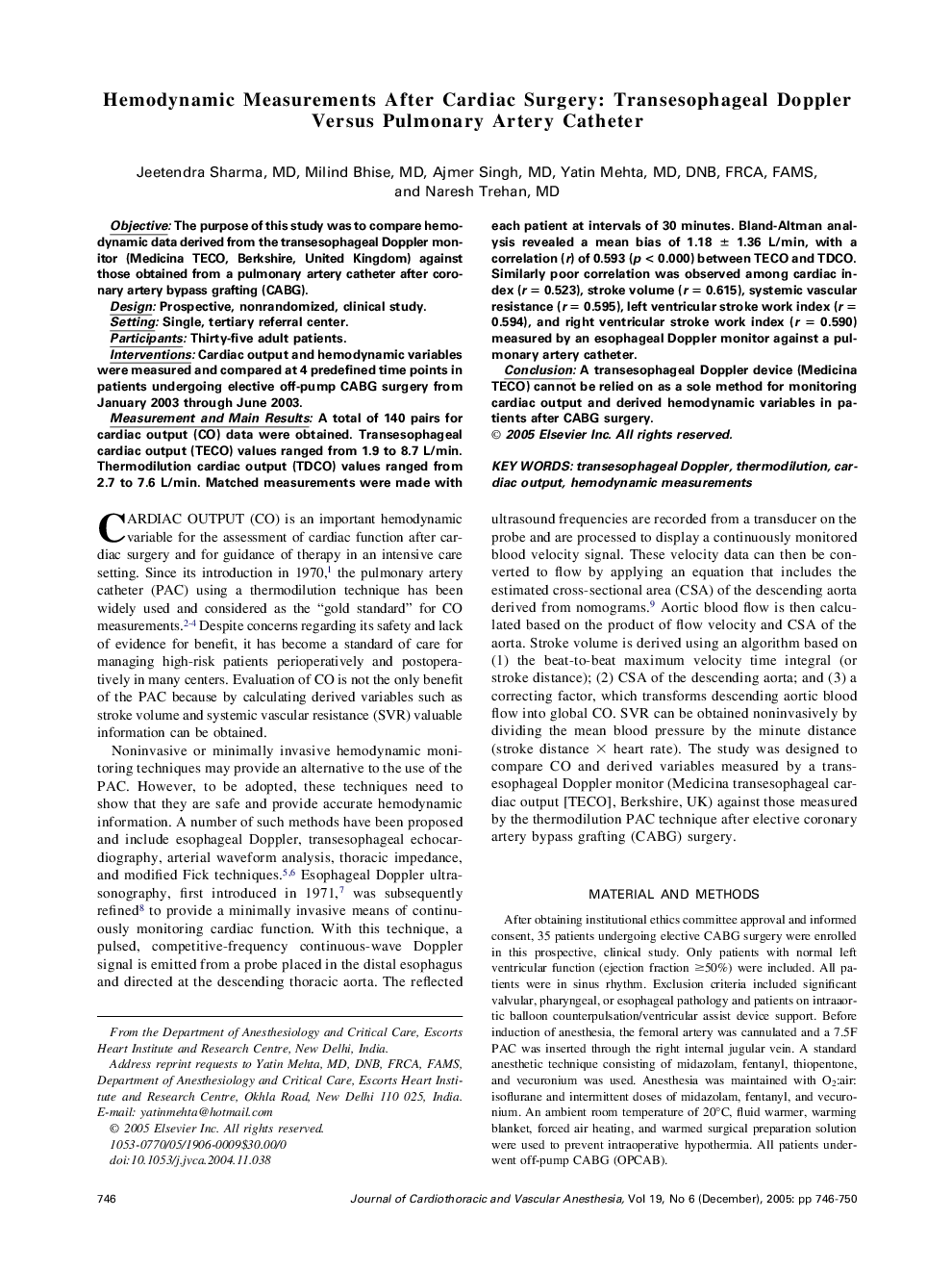| Article ID | Journal | Published Year | Pages | File Type |
|---|---|---|---|---|
| 9095117 | Journal of Cardiothoracic and Vascular Anesthesia | 2005 | 5 Pages |
Abstract
Objective: The purpose of this study was to compare hemodynamic data derived from the transesophageal Doppler monitor (Medicina TECO, Berkshire, United Kingdom) against those obtained from a pulmonary artery catheter after coronary artery bypass grafting (CABG). Design: Prospective, nonrandomized, clinical study. Setting: Single, tertiary referral center. Participants: Thirty-five adult patients. Interventions: Cardiac output and hemodynamic variables were measured and compared at 4 predefined time points in patients undergoing elective off-pump CABG surgery from January 2003 through June 2003. Measurement and Main Results: A total of 140 pairs for cardiac output (CO) data were obtained. Transesophageal cardiac output (TECO) values ranged from 1.9 to 8.7 L/min. Thermodilution cardiac output (TDCO) values ranged from 2.7 to 7.6 L/min. Matched measurements were made with each patient at intervals of 30 minutes. Bland-Altman analysis revealed a mean bias of 1.18 ± 1.36 L/min, with a correlation (r) of 0.593 (p < 0.000) between TECO and TDCO. Similarly poor correlation was observed among cardiac index (r = 0.523), stroke volume (r = 0.615), systemic vascular resistance (r = 0.595), left ventricular stroke work index (r = 0.594), and right ventricular stroke work index (r = 0.590) measured by an esophageal Doppler monitor against a pulmonary artery catheter. Conclusion: A transesophageal Doppler device (Medicina TECO) cannot be relied on as a sole method for monitoring cardiac output and derived hemodynamic variables in patients after CABG surgery.
Related Topics
Health Sciences
Medicine and Dentistry
Anesthesiology and Pain Medicine
Authors
Jeetendra MD, Milind MD, Ajmer MD, Yatin (FRCA, FAMS), Naresh MD,
